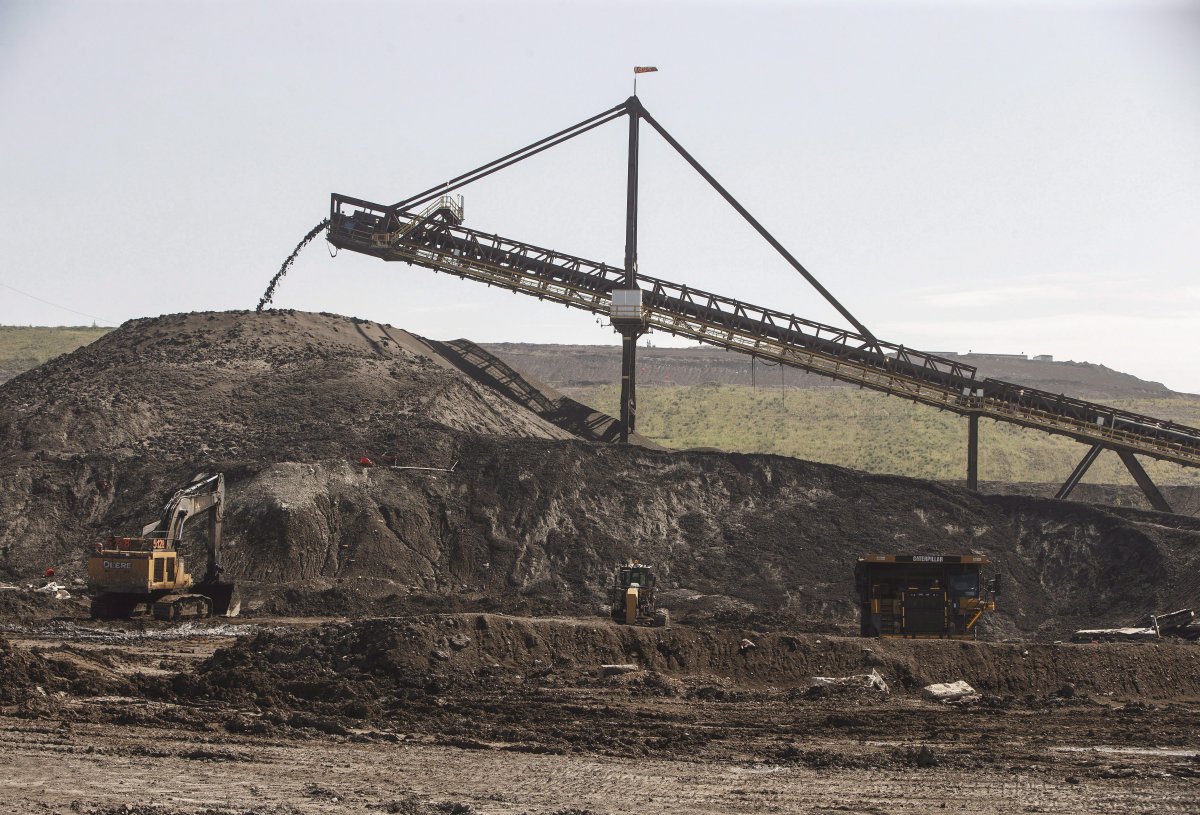Growth in oilsands production over the next 20 years is expected to be slower than previously forecast, despite falling project construction costs, according to a study update by the Canadian Energy Research Institute.

Total oilsands output is expected to grow from about three million barrels per day in 2018 to between 4.1 million and 5.8 million bpd in 2039, based on low and high growth scenarios presented by the Calgary-based think-tank.
In its reference or base case, CERI predicts bitumen crude output will grow to about 4.7 million bpd over the next 20 years, at an average rate of 80,000 bpd or just over two per cent per year — down from last year’s estimate of three per cent annual growth.
“We’re looking at demand for oil internationally, the cost profile for oilsands in Canada and our assumption that three new pipelines will be built,” said Allan Fogwill, CEO of the research institute.
Watch below: Some Global News videos about Canada’s energy sector.
The analysis assumes there will be sufficient growth through pipelines such as the Trans Mountain expansion, Keystone XL and Line 3, as well as incremental expansions of existing pipelines and crude-by-rail, to meet demand, he said.
Overall capital spending will average $16.5 billion per year, CERI calculates, but notes risk factors include the recent tendency of the industry to defer or cancel projects, the chance of further success in cutting costs, uncertainty about whether Alberta’s 100-megatonne cap on sector greenhouse gas emissions continues and the unknown future of export oil pipelines.
CERI says the slower growth will result in the industry staying well within the emissions cap, reaching 94 megatonnes by 2039 — under last year’s forecast, the cap would have been reached by 2030.
Meanwhile, the cost of building a new steam-driven oilsands project has fallen by 11 per cent to C$40.61 per barrel of production, while an expansion project’s cost has fallen by six per cent to C$27.60 per barrel, the study says.
“At current (West Texas Intermediate) prices of around US$60 per barrel, these projects are decidedly economic,” the report notes.
“The relative position of oilsands projects against other crude oils is comparatively competitive and, as oil prices are expected to increase, so will the profitability of oilsands projects.”
- Gas prices surge in some parts of Canada. What’s causing pain at the pumps?
- Roll Up To Win? Tim Hortons says $55K boat win email was ‘human error’
- Ontario premier calls cost of gas ‘absolutely disgusting,’ raises price-gouging concerns
- Canada’s income gap is growing. Will Budget 2024 help affordability?










Comments